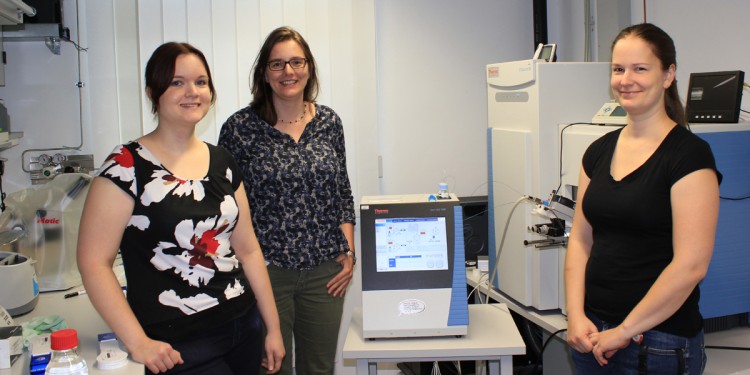
Plant physiologists discover new mechanism of photosynthetic regulation
It is plants which make life on Earth possible for countless organisms, including humans. They capture the energy of sunlight and convert it into sugar and biomass, releasing oxygen in the process. In doing so, they lay the foundations for most food chains. Behind this is photosynthesis – a complex molecular “light harvesting machinery” consisting of proteins and pigments. Plants have to flexibly adapt their photosynthetic process to light conditions. This means that there are two photosynthetic complexes – known as photosystems I and II – which work very well with light of differing wavelengths. A German-Finnish team led by plant physiologist Prof. Iris Finkemeier, PhD student Annika Brünje and post-doc Ines Lassowskat from Münster University has now discovered a new regulatory mechanism in thale cress (Arabidopsis thaliana) for switching back and forth between these two photosystems. The results have been published in the current issue of the “Plant Cell” journal.
The background: a frequent mechanism of molecular regulation is phosphorylation, during which – as a result of a minor reversible chemical change (docking onto a group of phosphates) – proteins are temporarily changed as regards both their function and their interaction with other proteins. This also occurs in photosynthesis. Additional regulative chemical changes to proteins are also involved in the photosynthetic process. On top of this, Iris Finkemeier and her colleagues have also demonstrated the existence of a new, previously unknown mechanism. For the first time, they have identified a “protein acetyltransferase” which plays an important part in this regulatory process. Acetyltransferases are enzymes which acetyl groups dock onto proteins for the purpose of regulating them.
“All over the world, it is taught in lectures that protein phosphorylation is a condition for the ‘switchover’ process between photosystems I and II,” says Iris Finkemeier. “In the plants which we used for our studies, the phosphorylation is not impaired, but nevertheless the ‘switchover’ does not function. This means that the phosphorylation alone cannot be responsible. We have now shown that a certain acetyl transferase is also responsible for it.” This acetyltransferase is known as “nuclear shuttle interacting” (NSI) and occurs in the chloroplasts of plants – in other words, in the cell components in which the photosynthesis takes place. The researchers were able to demonstrate that the NSI acetyltransferase supplies a range of proteins involved in photosynthesis with acetyl groups.
Plants in which this acetyltransferase does not work can adapt their photosynthesis to changed light conditions only to a limited extent. As Annike Brünje explains, “Plants have mobile molecular light harvesting antennae in the membranes of their chloroplasts. Normally, these antennae change their position depending on light conditions, and as a result they switch back and forth between the two photosystems. But if the NSI acetyltransferase is missing, the transition no longer works. This means, evidently, that at least two regulatory systems are involved.”
In order to identify the target molecules of the NSI acetyltransferase in the chloroplasts of the thale cress, the researchers used high-resolution quantitative mass spectrometry. For measuring the photosynthesis and for analysing the light harvesting complexes, they used spectroscopic methods as well as a method for separating proteins – native gel electrophoresis. They identified the acetyltransferase in the chloroplasts with the aid of fluorescence microscopy.
In addition to the Münster team, researchers from the University of Turku in Finland also played a leading role in the study. The Münster researchers received financial support from the German Research Foundation and from the European Research Area Network for Coordinating Action in Plant Sciences.
Original publication:
Minna M. Koskela, Annika Brünje et al. (2018): Chloroplast acetyltransferase NSI is required for state transitions in Arabidopsis thaliana. Plant Cell; DOI: 10.1105/tpc.18.00155
